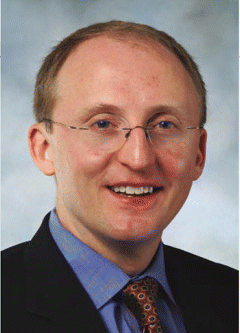SCPL was categorized by Henry Laccoureye, who provided a nomenclature to describe these approaches: cricohyoidoepiglottopexy (CHEP) for glottic cancer, which preserves the epiglottis, and cricohyoidopexy (CHP) for supraglottic cancer, which includes removal of the epiglottis because the cancer has spread to it, explained Erich Sturgis, MD, Associate Professor at M.D. Anderson Cancer Center in Houston, Tex. Dr. Sturgis noted that CHEP is a less complicated procedure, “from a functional point of view.”
Explore This Issue
June 2006During the period that CHEP and CHP were being described in France, total laryngectomy was the procedure of choice in the United States, and exploratory studies were being done using radiotherapy and chemotherapy to treat laryngeal cancer.
Over the next 20 years, supracricoid CHP and CHEP were widely performed in France.
“Most head and neck surgeons in France were able to perform these procedures. However, only a handful of US surgeons were aware of SCPL, and still only about two dozen surgeons in the US regularly perform SCPL and its variations,” Dr. Holsinger stated.
“Only about two dozen surgeons in the US regularly perform SCPL and its variations.” – Chris Holsinger, MD
Introduction of SCPL in the US
In the summer of 1990, Olivier Laccoureye, a surgical resident from France who was fluent in English, visited the University of Iowa where he met Dr. Weinstein and taught him about SCPL. The two surgeons collaborated on the first articles on SCPL to be published in the English language, and Dr. Weinstein did the illustrations for the articles.
“At the time, SCPL was considered radical and the publications were greeted with skepticism. Over the next five years, Laccoureye and Weinstein published more papers and gave talks around the US and trained other surgeons in the technique, teaching them about the need to preserve the cricoarytenoid joint,” Dr. Holsinger said.
“A comprehensive surgical approach with SPCL became a new surgical option that did not leave patients with a permanent tracheostoma. It was clear that one could remove virtually the entire larynx, saving the arytenoids, and then place strong stitches between the cricoid and hyoid, allowing patients to retain the ability to speak and swallow,” Dr. Holsinger commented.
SCPL is a reasonable option for advanced or intermediate vocal cord cancers where the cricoarytenoid joint is still mobile.
Total laryngectomy creates a stoma in the neck, which has a negative impact on quality of life. Further surgery and a plastic speaking valve are necessary for speech. “They can never again go swimming,” Dr. Holsinger said, “and social functioning is profoundly affected.”
Radiation and Chemotherapy
In the spring of 1991, the New England Journal of Medicine published the VA study, which found no difference in survival between total laryngectomy plus radiotherapy versus chemotherapy plus radiotherapy as treatment of laryngeal cancer (N Engl J Med. 1991;324(24):1685–1690). After the VA study, chemotherapy and radiation were widely adopted as standard treatment for intermediate to advanced laryngeal cancers. The prevailing opinion was that surgery was not necessary for laryngeal cancer, and the role of surgeons has diminished.

Leave a Reply